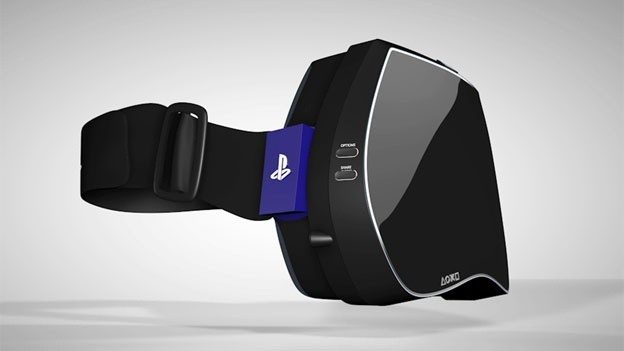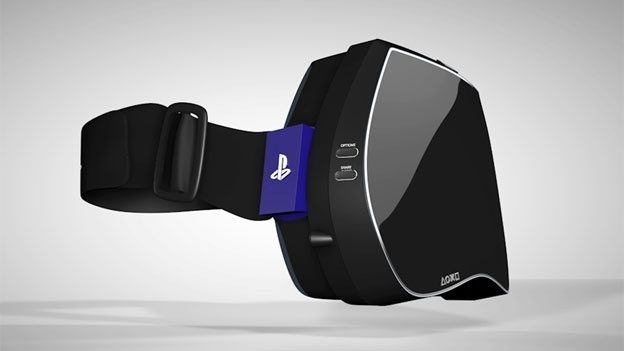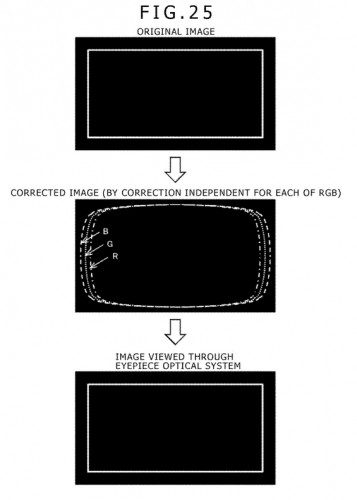
We’ve dug up a patent filed by Sony which describes a method for independent RGB distortion and gamma correction on a “wide angle… virtual reality” HMD, bolstering our confidence that Sony is working on a PS4 VR head mounted display.
 Optical Distortion Correction
Optical Distortion Correction
One of the reasons that the Oculus Rift is so inexpensive compared to prior head mounted displays is that it uses incredibly simple optics. Just one lens separates the screen from your eye. The lenses focus the light from the display but warp the images on the other side. Powerful modern GPUs are leveraged to compensate for this; the rendering program pre-applies warping to the image that inversely matches the distortion introduced by the lenses. The result is a normal non-warped image — and a very simple optical system for the Rift, which keeps weight and cost down.
We’ve found a patent filed by Sony earlier this year and published late last month that describes a similar method of distortion correction. The method includes independent correction for each of the three RGB color channels, to combat chromatic aberration, a subtle separation of the RGB channels due to varying refractive indices of different wavelengths of light:
According to the technique disclosed in the present specification, in a display device obtained by combining a display panel [and] a lens, particularly the occurrence of color unevenness and the degradation of fineness as an adverse effect by signal processing independent for each color component can [be] prevented and it becomes possible to display images with higher image quality.
Hints of a PS4 VR Head Mounted Display
We’ll spare you additional technical details of the patent — what’s particularly interesting about it is that it specifies that such a method would be ideal for a “wide angle” head mounted display, and one that was designed for “the feeling of virtual reality.”
Sounds like Sony is developing this method for use in their rumored PS4 VR head mounted display, which was expected to be announced at last month’s Tokyo Game Show. Perhaps coincidentally, the patent in question was published on the 19th of September, the same day that TGS 2013 began.
To our knowledge, of the modern consumer head mounted displays that Sony has released, they have never used the term “virtual reality” in their marketing or documentation, preferring instead to call their HMDs “wearable HDTV[s].”
Another recent patent for a Sony head mounted display (targeted toward the medical field) also does not use the term “virtual reality”. We haven’t seen “wide angle” crop up either in any recent Sony patents for HMDs, until now.
To see these two terms appear in a Sony patent that describes a method of distortion correction — one that would be useful in an Oculus Rift-like head mounted display with wide field of view — makes us more confident that the company is working on a VR head mounted display for gaming, probably to be branded with PS4 or PlayStation.
I’ve got $20 down on the name ‘PlayStation Vision,’ any takers?








